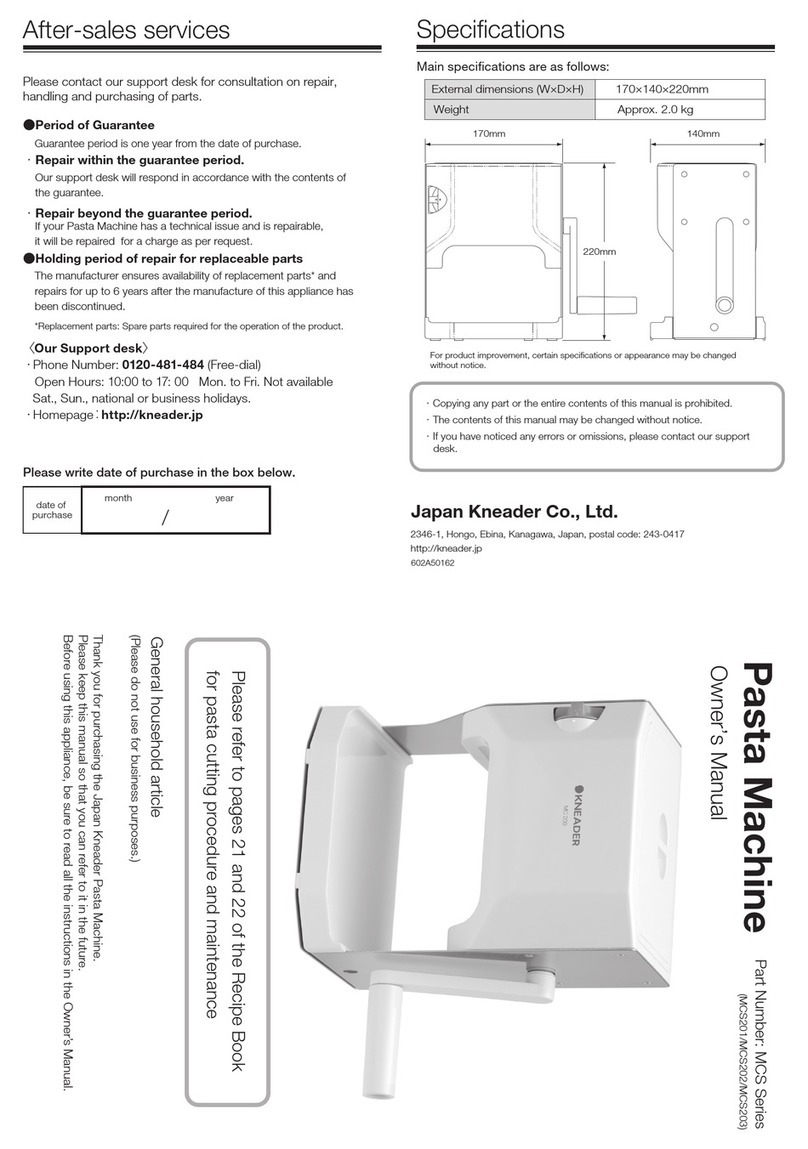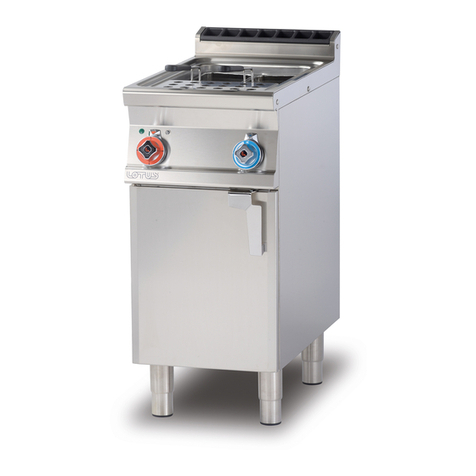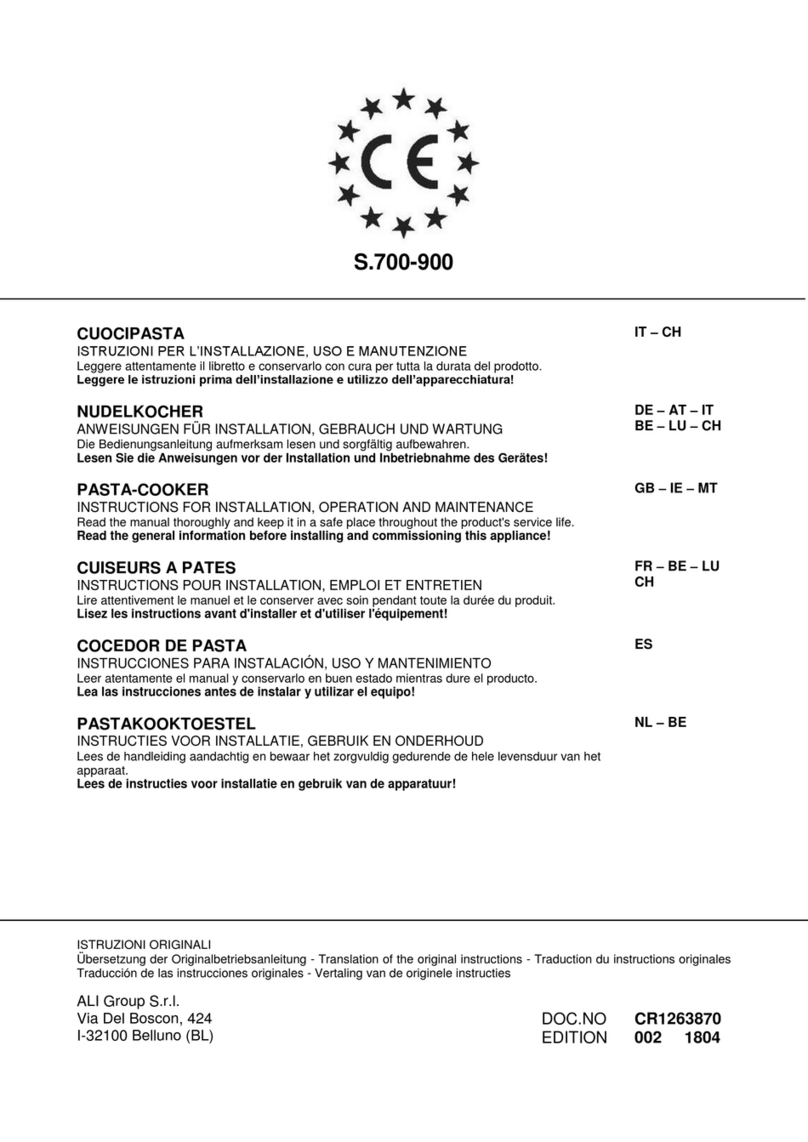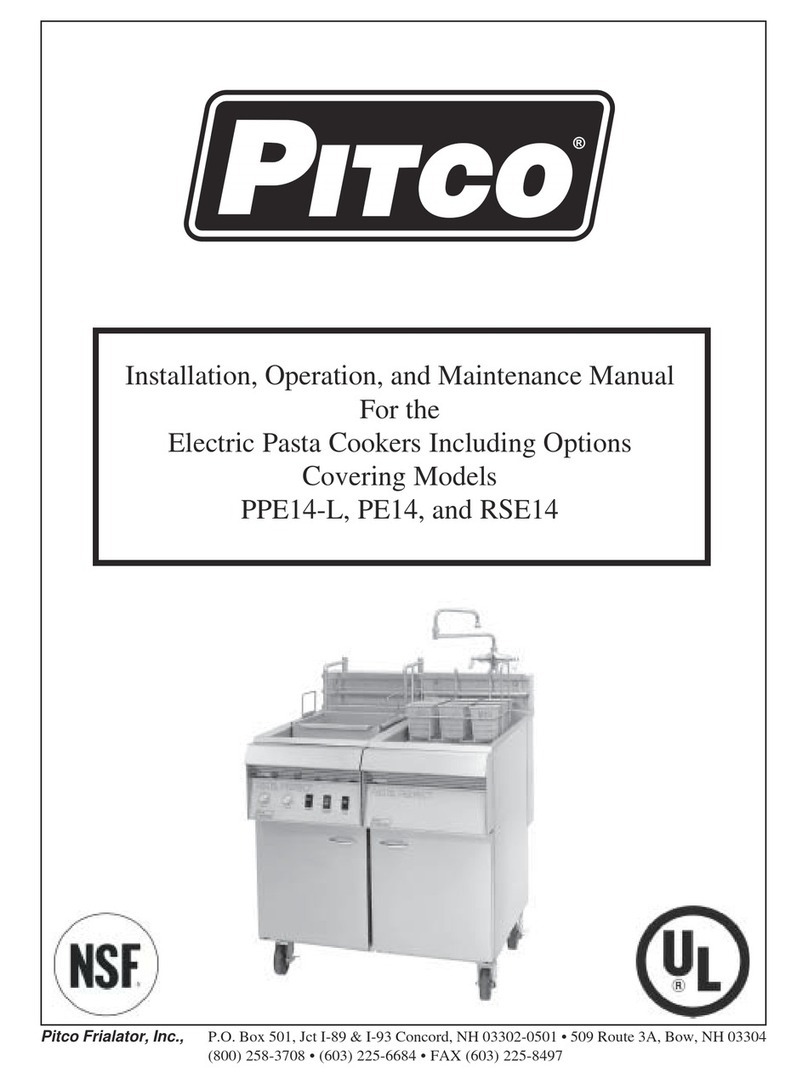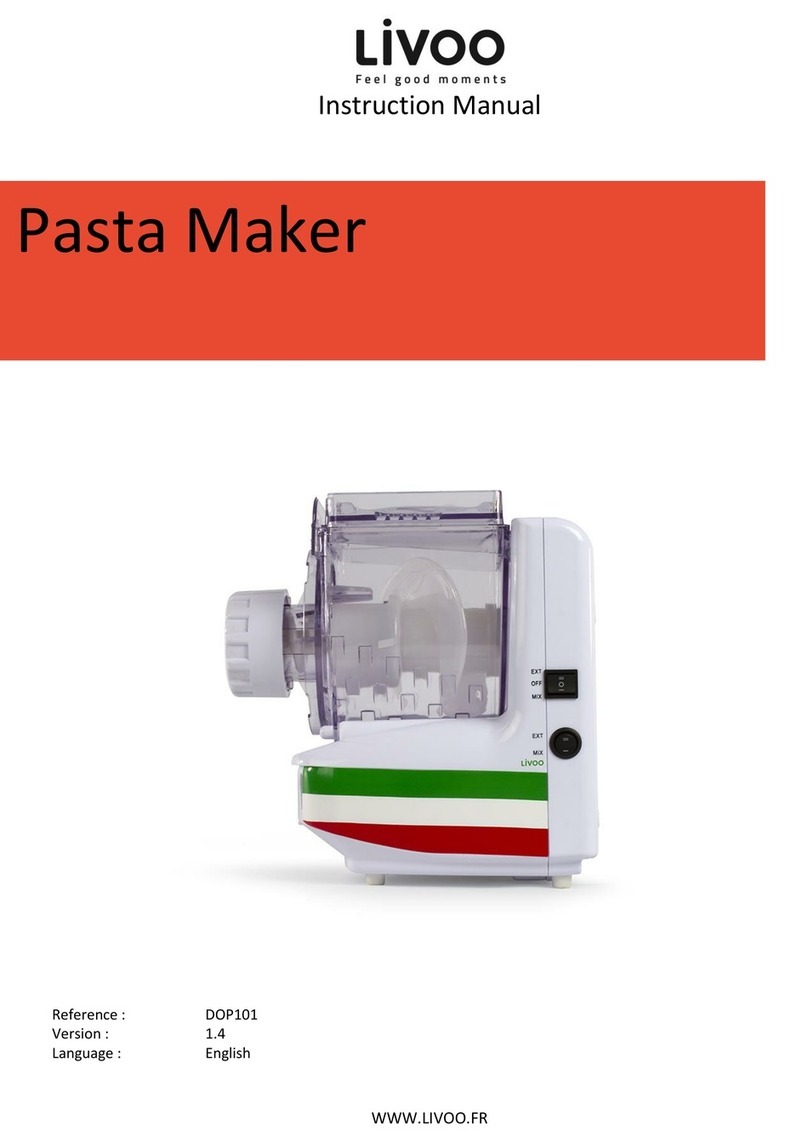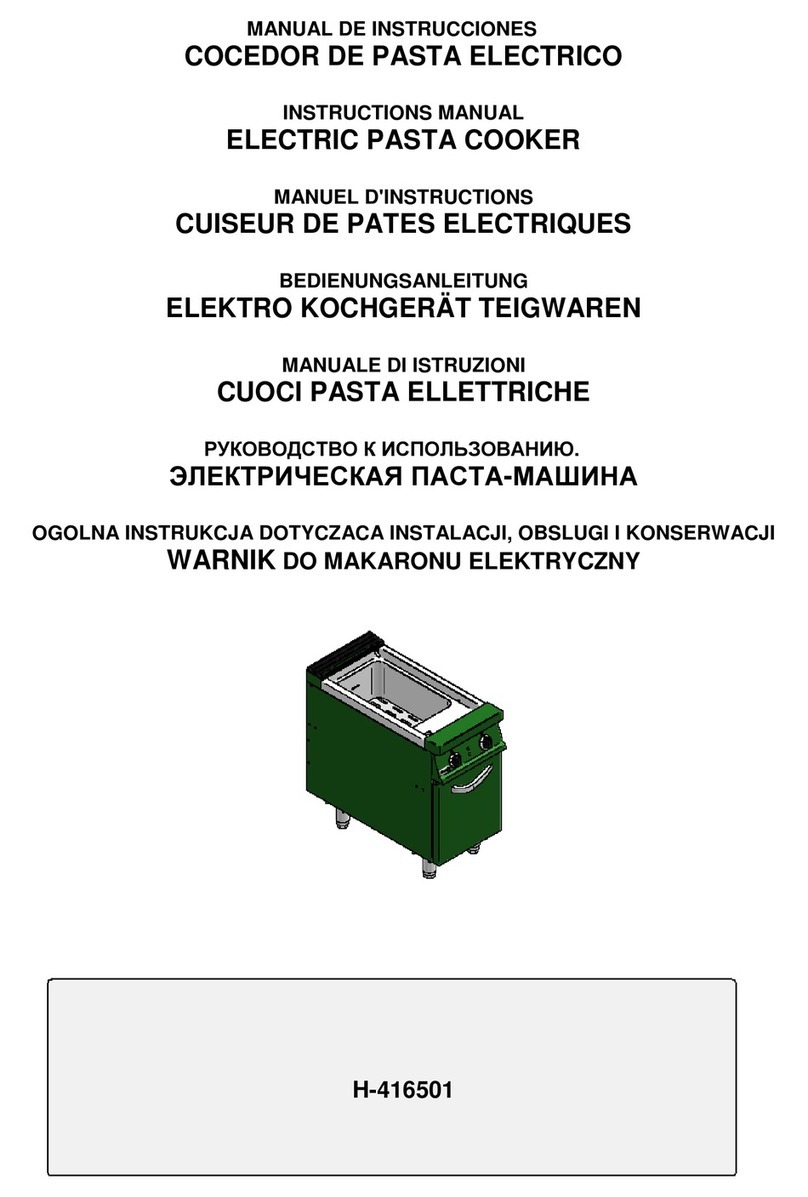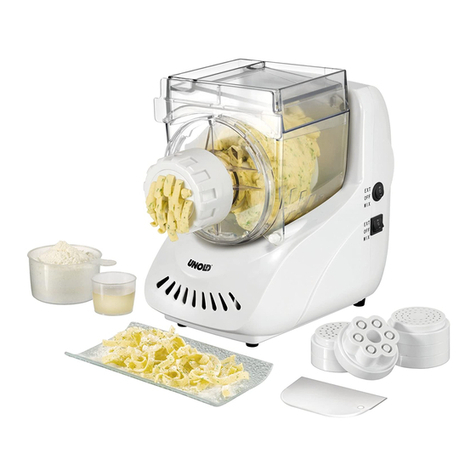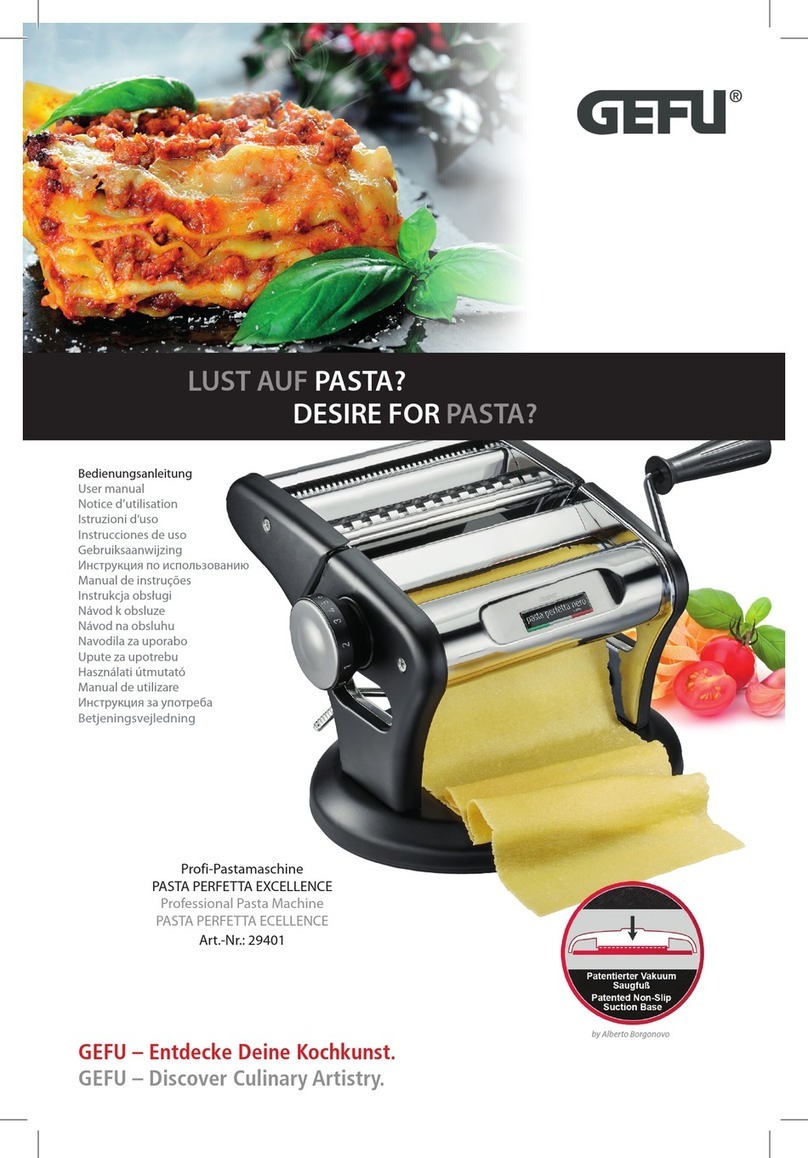
Notes on Health
❐There may still be some production residues on the device. To avoid harmful effects to
your health, clean the device and all accessories thoroughly before using them for the
first time (see the "Cleaning and Storage" chapter).
❐Only use fresh ingredients which have not passed their best-before date.
Danger of Electric Shock
❐Never immerse the device, the mains plug or the cable in water or other liquids.
❐Do not place the device near to any sink or wash basin so that the device, the mains plug
and the cable cannot accidentally come into contact with water.
❐Do not touch the device, cable or mains plug with wet hands.
❐The device should only be used in closed rooms.
Notes on Set-up and Connection
❐Place the device on a stable, firm surface.
❐Maintain a sufficient distance from heat sources such as hobs or ovens in order not to
damage the device.
❐The device should only be connected to a properly installed socket with earthing
contacts. The socket must also be readily accessible after connection. The mains voltage
must match the technical data for the device (see the "Technical Data" chapter). Only use
suitable extension cables whose technical data is the same as that of the device.
❐Ensure that it is not possible for others to trip over the connected mains cable. Do not
allow the cable to hang over the edge of tables or kitchen counters. Others may become
caught and pull the device down.
❐Position the cable in such a way that it does not become squashed or bent and does not
come into contact with hot surfaces.
❐Do not expose the device to extreme temperatures, strong temperature fluctuations,
direct sunlight or moisture.
Notes on Use
❐Always check the device for damage before putting it into operation. If the device, cable
or plug shows visible signs of damage, the device must not be used until the damage has
been repaired. Do not use the device if it has malfunctioned or been dropped. In such
cases, get the device checked out by an authorised specialist.
❐If the device is broken, do not attempt to repair the device yourself for your own safety.
In the event of any damage, please contact a specialist or our customer service depart-
ment (see the "Customer Service" chapter).
❐Do not insert any foreign bodies or body parts into the housing of the device and never
attempt to open the housing of the device yourself in order to prevent damage to the
device.




